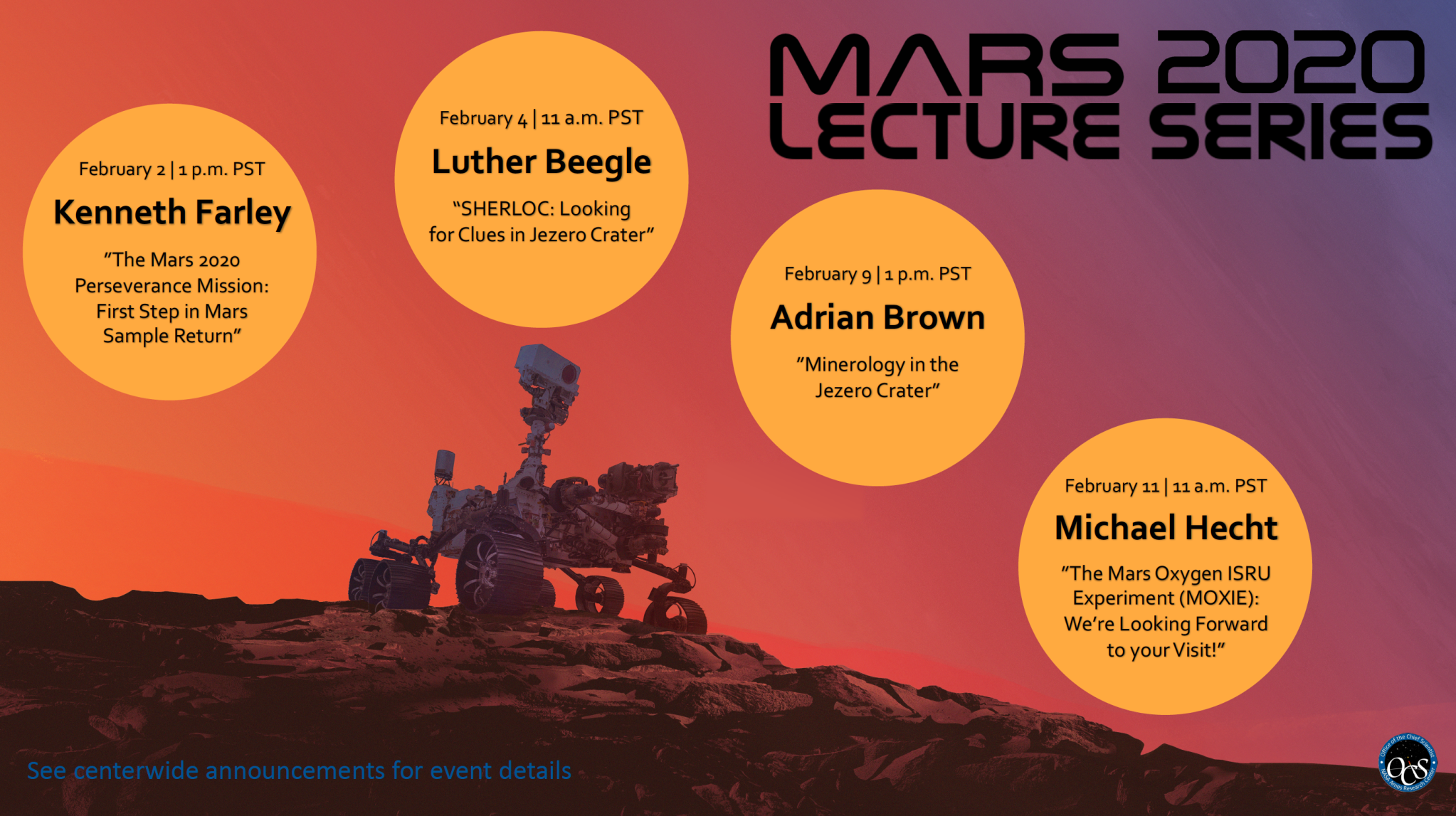“SHERLOC: Looking for Clues in the Jezero Crater” was be presented by Dr. Luther Beegle on February 4, 2021 as part of the four-lecture series celebrating the landing of the Perseverance Rover.
See your centerwide announcement for event details and log on information.
Over four decades of missions to Mars have provided evidence that it has not always been the cold, barren planet we know today. Billions of years ago, Mars was covered with water, creating river basins and other geologic formations that could have hosted life. The Scanning Habitable Environments with Raman & Luminescence for Organics & Chemicals, or SHERLOC, is a payload on the Perseverance Rover that will utilize a UV Raman spectrometer, a laser and a camera to map organic matter and minerals in the Jezero Crater. These measurements will help scientists assess the previous habitability potential of this region and determine if there are potential biosignatures preserved in martian rocks. Please join Dr. Luther Beegle, SHERLOC’s Principal Investigator, as he discusses how SHERLOC will build upon previous exploration missions to identify Mars’ past biological potential.
Abstract:
One of NASA’s key scientific goals is to determine if life is or was present elsewhere in our solar system. Mars is the most Earth-like planet in the solar system that at some point in its past had ample bodies of standing liquid of water on its surface. Additionally, it was geothermally active with volcanism potentially providing an energy source for the origin of life at locations such as hydrothermal vents. An overarching theme of past and future Martian exploration focuses on characterizing its aqueous history, determining its habitability potential and searching for evidence of the origin of life. SHERLOC combines fluorescence and Raman spectroscopy with microscopic imaging to analyze surface material in order to better understand the conditions when there was liquid water in Jezero Crater. The mineral and organic maps generated by SHERLOC, will be combined with measurements form the other payload elements to generate in situ science. This will enable the collection and caching of high priority scientific samples for eventual return to earth as part of the Mars Sample Return (MSR) campaign.
Biography:
Luther Beegle is the Principal Investigator of the SHERLOC instrument on the Perseverance Rover. He is the Deputy Manager of the Science Division at the Jet Propulsion Laboratory where he has been employed since 2001. He received his BS in physics from the University of Delaware in 1990, and his PhD in physics from the University of Alabama At Birmingham in 1997. After graduating, he was a National Research Council Post-Doctoral Researcher JPL and spent time as a Post-Doc at the California Institute of Technology. He is an experimental physicist by training and has extensive astrobiological science interests as well as developing instrumentation for space applications.




























